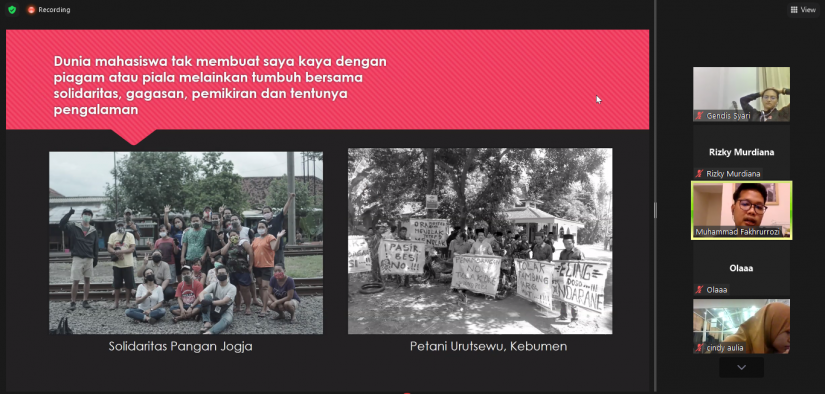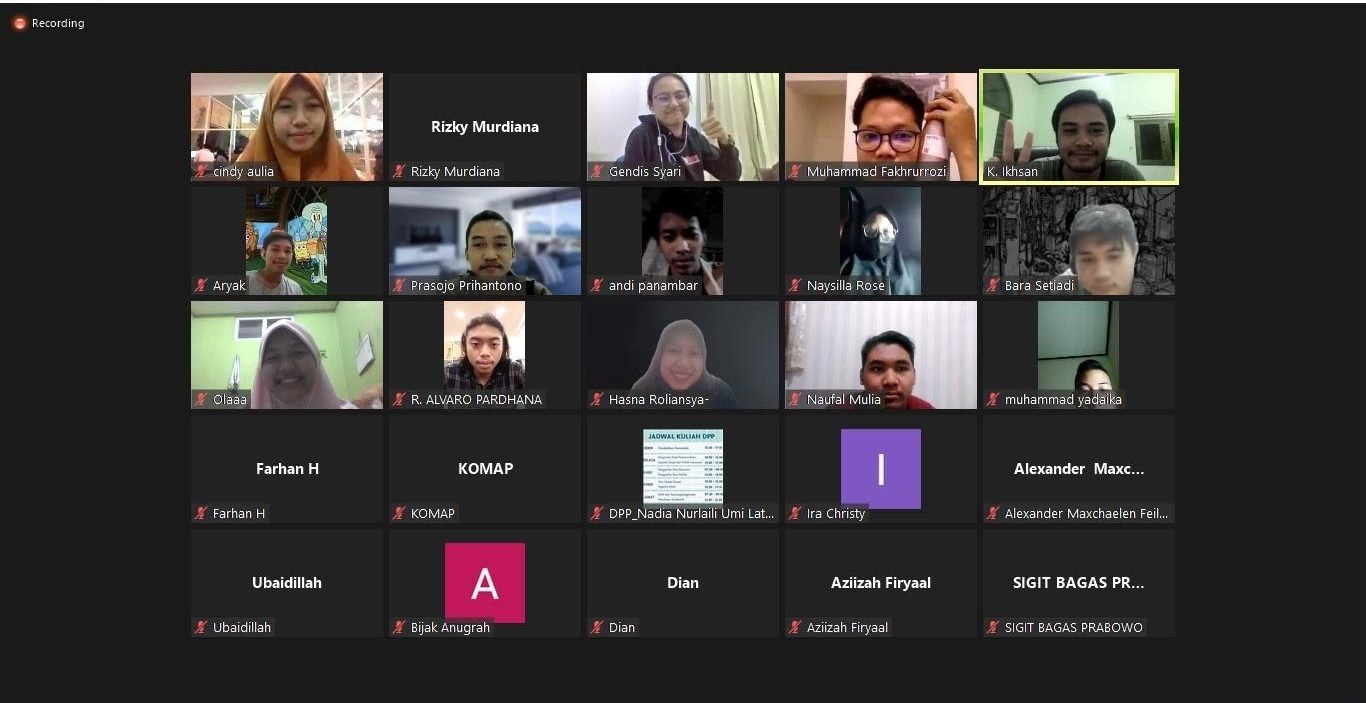
Then entering the main session, the first sharing of material was delivered by Gendis Syari with several important points, namely starting from why people move, how to place positions in a movement, and how we build awareness. Starting from the material about why people move, Gendis made an analogy with a simple case, in general people move because there is hope and there is an interest where they do not get their rights as they should. We need to map out who are the actors who are powerful and who are powerless, to determine alignments in a movement. Building awareness in a movement can be done by learning which further differentiates the student movement from other movements is how we present an academic perspective in the form of studies, writings as the basis for why we move.

Complementing the previous speakers, the second speaker presented the topic of how to interpret a student movement. In this case, Ozi, who is familiarly called by the second speaker, said that the student movement requires a deep breath in its dynamics, in fact the student movement requires political education which unfortunately is still quite minimal so it is quite easy for a movement to be broken. Changes can be made and it takes a long breath, one of which can be done by fellow students. Therefore, real actions are needed as a form of learning as well as building a movement that can have an impact on society as a whole.
